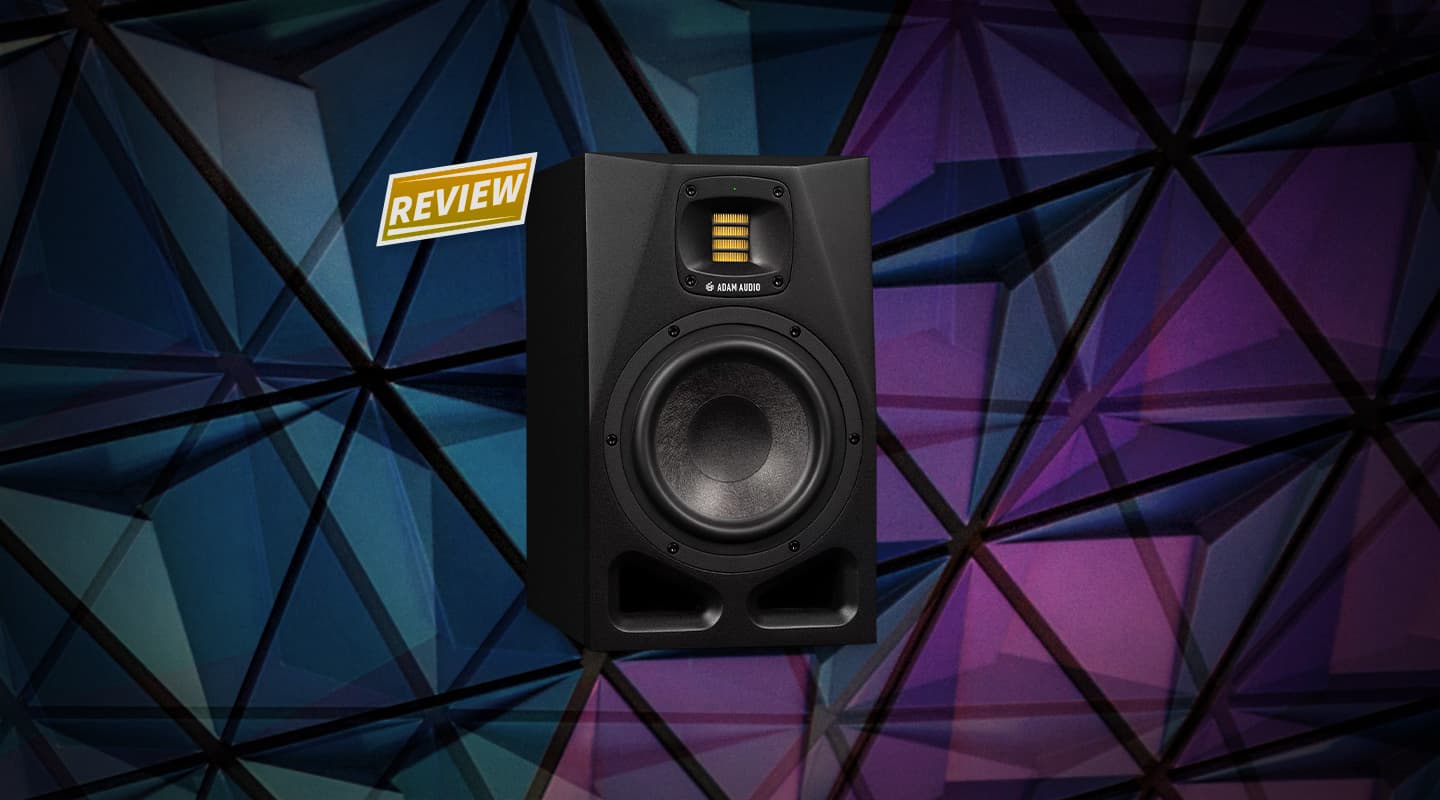
Review: ADAM Audio A7V Studio Monitors
The A7V is a solid and welcome addition to the revamped A Series, integrating Sound ID room calibration and DSP.
Since its inception in Berlin in 1999, ADAM Audio has built a strong identity as a manufacturer of high quality monitors. Its patented ART folded membrane tweeter was an instant hit and ADAM speakers quickly found their way into many pro and home recording setups over the following two decades. Following on from the very successful A7 and A7X models, ADAM has now released the A7V as part of its revamped A Series.
RUNNING IN THE FAMILY
The A7V lies smack bang in the middle of the new range and aims to hit the sweet spot in terms of size, affordability and performance. At first glance it is a fairly modest monitor in size at 337mm tall and 200mm wide, though this is slightly deceptive as the 280mm deep enclosure and 8.7kg weight lend it more heft than the front-on view would suggest. It is a two-way, dual-ported nearfield design that very much builds on what has come before.
The A7V is instantly recognisably as an ADAM monitor. The X-ART tweeter is present and correct, along with its surrounding HPS waveguide, smoothly contoured seven-inch driver and twin bass ports down below. The A7V gives off an air of sleek professionalism with the dark matte colour scheme and bevelled upper edges oozing German-manufactured class. The driver is made of new-age multi-layer mineral fibre compound and also looks like it means business. Inside, the monitor packs two amplifiers: PWM for the tweeter and Class-AB for the driver, with an overall power rating of 300W delivering a maximum 113dB SPL per speaker.
THE BACK & BEYOND
While the physical unit ticks all the boxes for a modern studio-ready monitor, its around the back that ADAM’s recent innovations take another step forward. Pulling focus at the top of the rear panel is the Room Adaptation EQ. This is a four-band stepped tone-shaping tool that delivers broad cuts and boosts in key areas and is operated via large black pushbuttons. The graphic display combined with status LEDs makes this a very simple and user-friendly feature to navigate.
Just below sits an RJ45 Ethernet port enabling remote control of the unit via the company’s A Control software, and next door another dedicated pushbutton steps through the three main voicing options. The starting point here is Pure (ADAM’s default setting for general studio work based on flat response in an anechoic environment), the second voicing is UNR (a more characterful Uniform Natural Response based on some of ADAM’s previous A and AX series monitors), and last but not least the External setting allows either A Control’s Advanced Adaptation EQ curves or Sonarworks’ stored room calibration settings to be selected.
The combination of three voicing options, calibration imports as well as software control and onboard EQ makes the A7V’s extremely flexible in terms of sonic presentation. This is well-conceived and cleverly executed technology that makes the most of the simple back panel controls.
Moving to the right of the voicing section is a softly centre-detented, continuously-variable volume control with a very slick feel to its range. Here’s the source of my only small gripe: just how easy it is to accidentally nudge the pot when reaching in behind the monitor to power it up (especially when horizontally placed), and the lack of stepped settings that make accurate incremental adjustments a bit of a guessing game. The latter is somewhat ameliorated by the accurate volume adjustments available via A Control.
Further down the back panel, XLR and RCA inputs are complemented by an input selection switch. A standard IEC power socket and switch round out the features here.
Pleasingly, the A7V boasts soft power-up, meaning no grating pops or thumps when waking the units up for audio work.
ADVANCING ADAPTATION
ADAM’s A Control software really is the key to maximising the new design’s flexible disposition. A Control is easily downloaded and consists of a relatively simple one-page portal whose features pack quite a punch. To access the software a network router is required to connect your speakers to your computer but once this is done and you’ve entered the serial numbers of your units, A Control readily integrates them into a Setup and you can start remotely adjusting EQ curves, individual monitor’s delay and volume levels, as well as selecting inputs and voicings. This is also the means to update firmware as required.
One last feature, only accessible through the software, is the Advanced Adaptation EQ. This is a six-band parametric EQ that once again allows highly customisable tonal settings to be tweaked and stored as a preset. At a more global scale, A Control allows users to manage the integration of multiple speaker setups and greatly simplifies things like switching between 5.1 and stereo mix settings. Multiple setups can be selected or muted with a few simple mouse clicks.
NEED TO KNOW
SOUND & VISION
While its easy to get carried away with all the digital add-ons, one fundamental fact needs to be stated: the ADAM A7V is a great-sounding, high quality monitor. Perhaps the most glowing recommendation I can offer is that I had the use of the ADAM A7Vs for about a month and, despite being a dyed-in-the-wool Quested user, once I plugged the A7Vs in, I didn’t once consider switching back over to my tried and trusted midfields. I found the A7Vs immediately sat well with me in Pure mode and I mixed several albums worth of material on them without any qualms. I really liked their tonal presentation which has a lovely even feel through the frequency range. They didn’t fatigue me, they didn’t feel exaggerated in any tonal area, and they presented my mixes in a pleasing but still detailed and forensic way that allowed for accurate EQ and effect placement.
The bottom end is pleasingly solid for a pair of nearfield speakers and the sound certainly isn’t ‘small’.They translated well on a range of different media and also delivered a big sound that lacked nothing in weight down low.
The A7Vs can get quite loud and their imaging and tonal coherence easily reaches the back of my 8m-deep room, filling the space beautifully.
These speakers are worth every cent of their asking price just in Pure mode, but of course I very much enjoyed seeing and hearing what else the ADAMs could do. UNR mode is a good second option with a generous dollop of bass bloom and lower midrange thickness immediately apparent. I found this setting more useful for general musical enjoyment and a second opinion on low-end sources but I preferred Pure for day-to-day mix work.
The onboard EQ is also useful and offers well-judged stepped settings to address bass, midrange and high frequency issues. When I’m working on my Quested V2108s I prefer a slight top-end roll off for long mixing sessions. I didn’t feel that need with the ADAMs and left the Room Adaptation EQ flat. This is, of course, very much a room by room, user by user proposition, but the options cover a good range of tonal tweaking where required.
CALIBRATION ASSIGNATION
I reviewed the Sonarworks Sound ID room measurement and calibration software last year for AT so, being familiar with the process, it was a fairly straightforward exercise to update the software and test out the ADAMs using the Sound ID Reference microphone. The response curve for the A7Vs in my room at a listening position of around a meter and a half from each speaker showed several prominent peaks in the low end and lower midrange with a steep roll off below 60Hz. From 700Hz to 1.5kHz there was a less pronounced dip and the top end response gently descended from 7kHz on up. Having captured my listening point’s frequency portrait, the next step was to name and save this as an Adam Audio supported preset and export the corrective calibration EQ into the speakers’ onboard memory. To do this I ensured my speakers were networked to my computer and opened the A Control software, using the drop down menu in the upper left corner of the control panel to import the file. This brings the calibration curve into play via the Sonarworks logo button in A Control, but in order to save the setting into the speakers themselves its necessary to do a secondary save on shutdown of the software. This instances a short reboot of the monitors whereupon the setting is physically saved in each speaker and can be selected on the back panel independently of the software (and ethernet cables). Once this was all in place it was a satisfying experience to toggle through the various voicings and hear the A7Vs respond with quite different sonic presentations.
Room correction is a curious and complex business. There are many ways to use the SoundID program but at its heart is a corrective EQ that seeks to produce a completely flat response. When this EQ is engaged it becomes immediately apparent that ‘flat’ does not necessarily equal ‘right’ in terms of monitoring. In my case the resulting sound through the ADAMs lost a lot of bottom end information and the top end became overly bright to my ears. Overall the sound coming out of the speakers suddenly felt unsatisfying and thin. While this setting might be useful for short periods of forensic listening (particularly for issues in the upper frequencies), I would not want to do long hours of mixing with it. As when I previously reviewed this software, I found it most useful when backed off to around 40% using SoundID’s wet/dry control. I found these settings to be particularly useful for checking my mixes in shorter forensic listening sessions, and this was a great adjunct to the Pure setting that I favoured for general tracking and mixing. Sonarworks offers several other ways to modify the raw correction curves as well as simulations of car, laptop and headphone presets and these are also well worth exploring.
DEVILISHLY DETAILED
If the back panel Room Adaptation EQ with its mirrored A Control software doesn’t quite have your tweak freak needs covered then the Advanced Adaptation option surely will. This six-band parametric EQ allows for more dramatic and surgical cuts and boosts and, while the digital control layout feels a little cramped and no-frills compared to the other features of the A Control software, there’s no doubting it allows for finer tuning and more nuanced EQ shaping than the other options. It must be said that all this tonal shaping comes on top of what are beautifully natural-sounding speakers, so inexperienced engineers in particular should proceed with a degree of caution where there’s so many tone-shaping tools up for grabs.
Ultimately, customising the voicing of your speakers should be about helping you make the right mix decisions that, in turn, lead to great translation across a range of listening devices. This takes time, a bit of experimentation, and the experience of working on a number of different projects and types of material, to fully dial in. With the A7V’s great starting-point sounds and flexible tools, combined with Sound ID software’s room measurement information, this goal should be achievable even in the most problematic spaces. In a good-sounding space the Pure mode is a joy to work with and I’d happily recommend the ADAM A7Vs to anyone looking for a quality set of nearfield monitors that won’t break the bank.
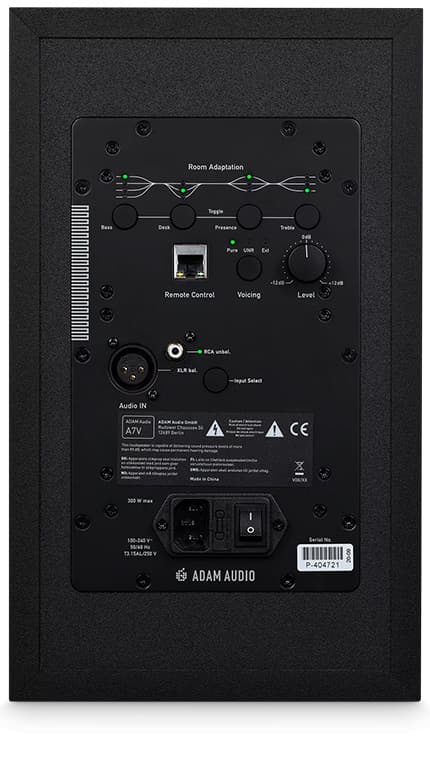

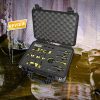






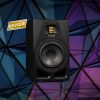
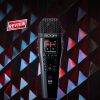

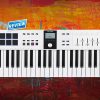



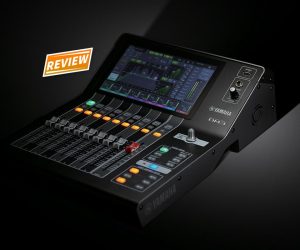
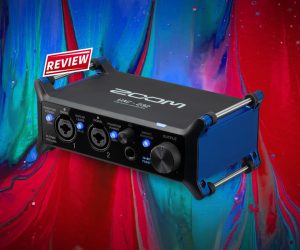
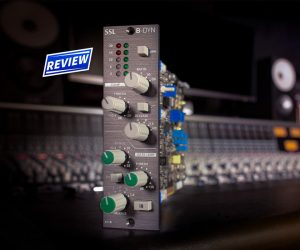
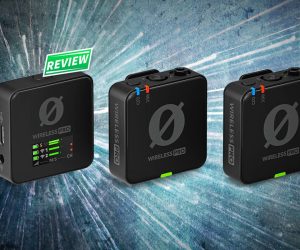
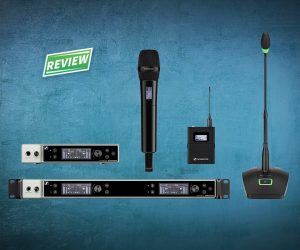
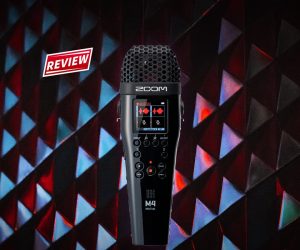


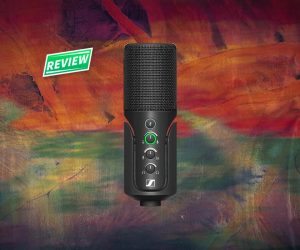
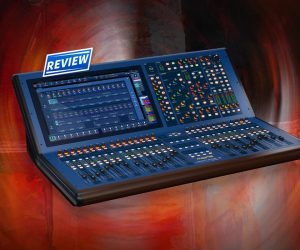
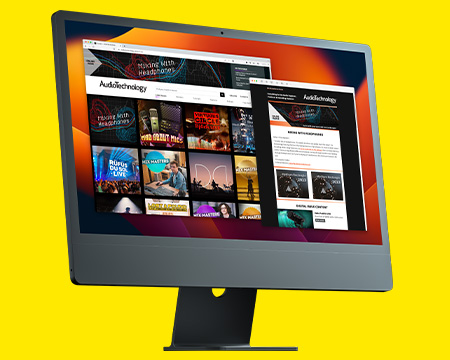
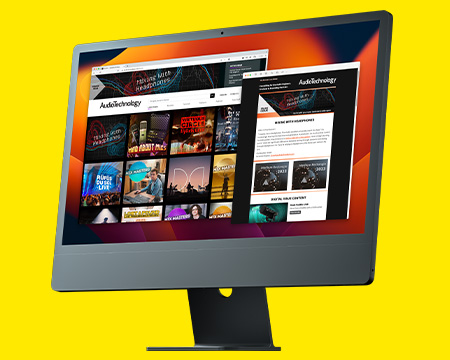
RESPONSES